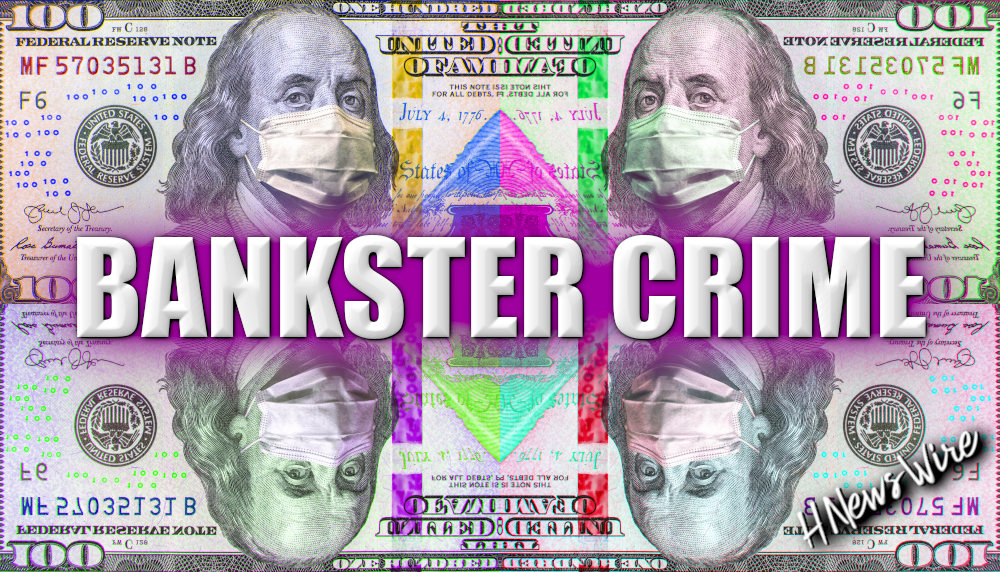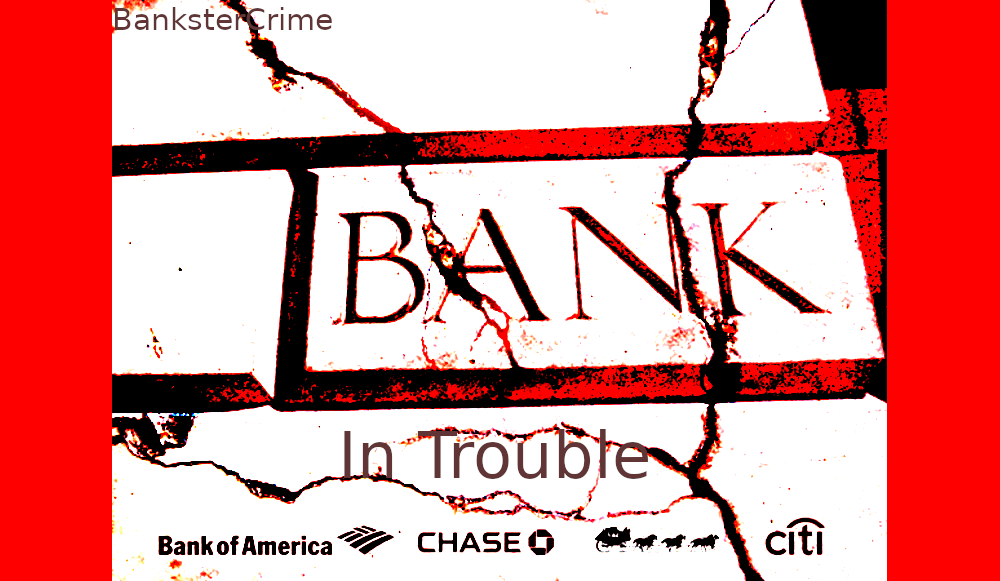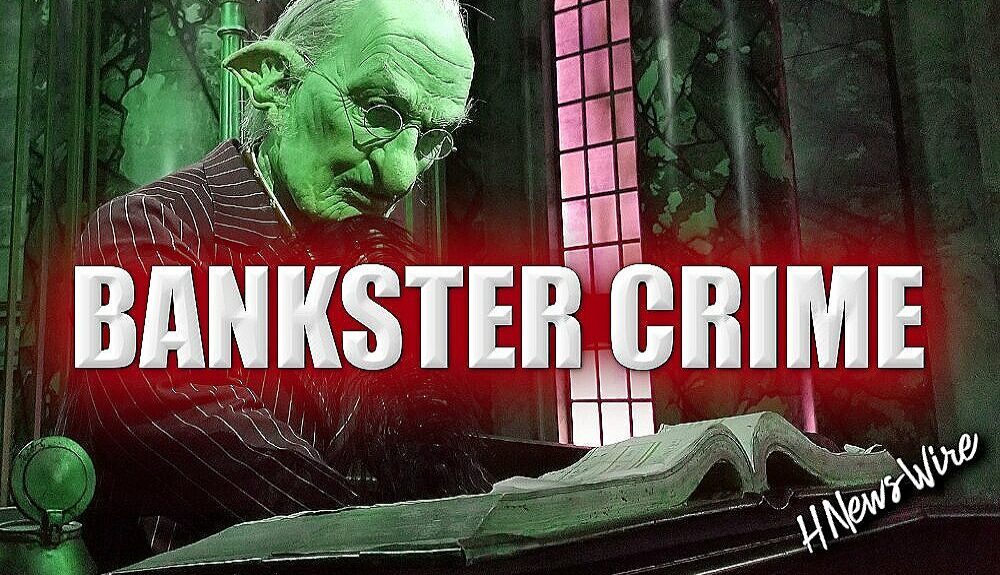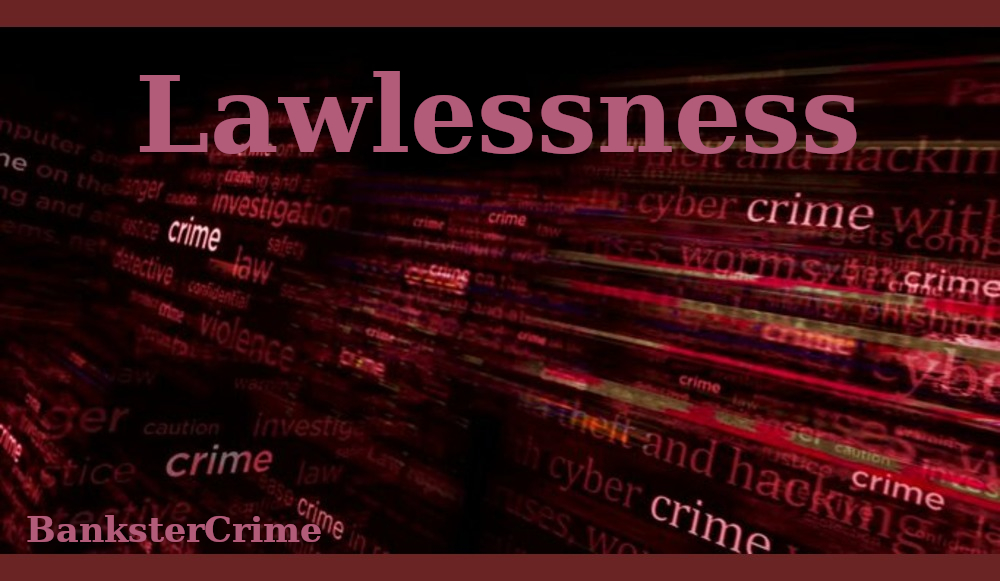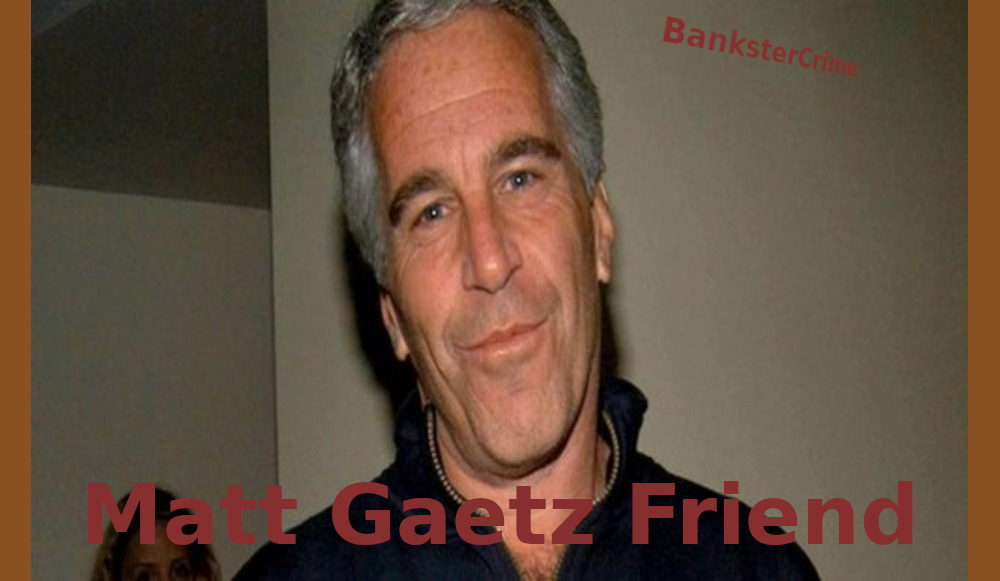A JPMorgan Court Filing Shows Another Bank Exec Visited Jeffrey Epstein’s Sex-Trafficking Residences 13 Times – Two More Times than Jes Staley

BanksterCrime:
By Pam Martens and Russ Martens:
 JPMorgan Chase is in a protracted legal battle in a federal district court in Manhattan over highly credible allegations that it “actively participated” in Jeffrey Epstein’s sex-trafficking of minors. The lawsuit has been brought against JPMorgan Chase by the Attorney General of the U.S. Virgin Islands where Epstein owned a private island compound that was a frequent venue of the sex trafficking operation.
JPMorgan Chase is in a protracted legal battle in a federal district court in Manhattan over highly credible allegations that it “actively participated” in Jeffrey Epstein’s sex-trafficking of minors. The lawsuit has been brought against JPMorgan Chase by the Attorney General of the U.S. Virgin Islands where Epstein owned a private island compound that was a frequent venue of the sex trafficking operation.
Part of the bank’s damage control strategy has been to sue one of its former top executives, Jes Staley, making him a third-party defendant in the same case, and attempting to convince the Judge and the media that Staley is mainly responsible for the bank keeping sex trafficker Epstein as a client for more than 15 years (and perhaps as long as 28 years). The bank says in court documents that it wants to claw back Staley’s $140 million in compensation for his “disloyalty” and “faithless service” to help pay for its legal expenses and $290 million settlement in a related case with Epstein’s victims.
But the Staley scapegoating as a legal strategy is starting to look threadbare as internal documents keep turning up to undermine the legal rationale of this argument. On August 25, JPMorgan itself filed a document showing that another executive at the bank, Justin Nelson, visited Epstein’s residences more times than Staley. Nelson was at Epstein’s Manhattan mansion – a key location of the sex trafficking operation – 12 times and one time at Epstein’s Zorro Ranch in New Mexico – an additional location of the sex trafficking ring. That’s a total of 13 visits to the residence of a sex trafficker. Staley’s visits to Epstein’s residences tally up to just 11, according to JPMorgan’s chart. (See pages 4 and 5 at this link.) Eight of Nelson’s visits to Epstein’s residences occurred after 2013, the year that the bank claims it fired Epstein as a client. Disbursements from Epstein accounts were occurring long after 2013 according to court documents, raising questions about just when, or if, Epstein was terminated as a client from the Private Bank or the bank’s brokerage unit, J.P. Morgan Securities. Nelson was dually employed at both units.
Nelson is not being sued by JPMorgan Chase. Instead, according to files at the self-regulator, FINRA, Nelson is working out of JPMorgan’s Greenwich, Connecticut office – which caters to hedge funds – and is a Managing Director and “Team Lead” in its Private Bank. FINRA records also show that Nelson was allowed by the firm to take the General Securities Sales Supervisor examination in August of 2020, suggesting that Nelson is now supervising others.
There is another highly problematic internal document involving Nelson that has been submitted to the court. It involves Epstein wanting to open an account for his company called Southern Financial in 2013 and Nelson acting as a “sponsor” to get the account approved. Nelson signed off on the due diligence report on June 7, 2013, with a risk rating on the account downgraded from “high risk” to “standard” risk despite the following astounding background provided on the owner of Southern Financial, i.e., Epstein. (Every honest, licensed broker in America is going to feel like tossing their cookies when they read this.)
The report on the internal JPMorgan document reads:
“In March 2005, a woman contacted Palm Beach police, concerned that her 14 year old daughter had been taken to Epstein’s mansion by an older girl and paid $300 after stripping and massaging him. She had told him that she was 18 years old. She undressed but had left on her underwear. By 2011 at least 40 girls had come forward with similar stories, some saying Epstein sexually assaulted them during the massage.
“Police started an 11-month undercover investigation of Epstein, followed by a search of his home. Subsequently, they alleged that Epstein had paid several escorts to perform sexual acts on him. Interviews with five alleged victims and 17 witnesses under oath, phone messages, a high school transcript and other items they found in Mr. Epstein’s trash and home allegedly show that some girls were under 18, although some maintained to him at the time that they were of proper age…
“In May 2006, Palm Beach police filed a probable cause affidavit saying that Epstein should be charged with four counts of unlawful sex with minors and one molestation count. His team of lawyers included Gerald B. Lefcourt, Alan Dershowitz and later also Kenneth Starr…
“In June, 2008, after pleading to a single state charge of soliciting prostitution, Epstein began serving an 18-month sentence. He served 13 months in jail of his 18-month sentence as a convicted sex offender in the state of Florida for soliciting an underage girl for prostitution. He is a registered sex offender.”
The above paragraph on the JPMorgan due diligence report contains a material misstatement of fact. Epstein was charged with two counts, not one. One count was for soliciting prostitution and the second count was for soliciting prostitution from a minor. A minor is not old enough to legally consent to sex, so calling this “prostitution” was another slimy deal worked out by Epstein and his attorneys to victim shame vulnerable girls from local middle school and high schools in the non-rich neighborhoods surrounding Palm Beach.
This preposterous downgrade of the account from “high risk” to “standard,” not to mention having any account connected to Epstein at the largest federally-insured bank in the United States, came after years of the anti-money-laundering and compliance personnel at the bank calling Epstein in internal emails a “known child sleaze,” “that scum Epstein” while another staffer acknowledged that he was aware that Epstein had stocked his mansion with “nymphettes.” The same personnel were exhorting their supervisors to fire Epstein as a client – which was overruled, year after year, by an invisible hand at the top.
In addition, as early as 2007 and continuing for years, compliance staff were expressing concerns about the sums of hard cash that Epstein was withdrawing. In October 2007, James Dalessio emailed a control group at the Private Bank that Epstein had withdrawn the following cash amounts in just a two-year span: 10 withdrawals of $40,000 year-to-date in 2007; cash withdrawals totaling $914,796 in 2006 consisting of 18 withdrawals of $40,000 in cash; two withdrawals of $60,000 in cash; one withdrawal of $30,000 in cash; and one withdrawal of $25,000 in cash.
A former FBI agent of 23 years, Shaun O’Neill, who is an expert witness for the U.S. Virgin Islands, submitted testimony to the court that the following sums of hard cash were withdrawn by Epstein:
“Epstein was able to withdraw large amounts of cash from his JPMC [JPMorgan Chase] accounts for years [Redacted]. In the year 2003, Epstein was able to withdraw highly suspicious amounts of cash totaling $175,311. In 2004, he withdrew $840,000. In 2005, he withdrew $904,337. In 2006, he withdrew $938,625. In 2007, he withdrew $526,000. In 2008, he withdrew $469,000. In 2009, he withdrew $165,011. In 2010, he withdrew $253,397. In 2011, he withdrew $260,000. In 2012, he withdrew $290,000. In 2013, he withdrew $197,152.”
A bank is required to file a Suspicious Activity Report for any cash withdrawals in excess of $10,000, especially when they occur with frequency. In oral arguments presented last Thursday for partial summary judgment before trial, a lawyer for the Virgin Islands, Mimi Liu of MotleyRice, told the court that JPMorgan Chase did not file any Suspicious Activity Reports until after Epstein died in his jail cell on August 10, 2019. (The New York City Medical Examiner ruled the death a suicide.)
While there are certainly plenty of internal emails produced during discovery that connect Staley to Epstein in problematic conversations, there is also the fact that every major Wall Street firm is supposed to have an email monitoring system that prevents sexually-suggestive photos from being exchanged between a client and a banker and to prevent the leak of insider information, both of which appears to have occurred between Staley and Epstein. Clearly, JPMorgan Chase’s email controls failed.
Staley was the head of JPMorgan’s asset management division from 2001 to 2009 and CEO of its investment bank from 2009 to 2013. Staley’s compromised relationship with Epstein points the finger at someone’s failure to supervise Staley. According to the deposition transcript of Jamie Dimon, the Chairman and CEO of JPMorgan Chase, Staley directly reported to Dimon and worked in an office located a few hundred feet from Dimon. So why should the blame for Epstein belong at the feet of Staley, rather than at the feet of the man who was supposed to be supervising Staley. “Failure to supervise” is a key legal argument in winning a case against a Wall Street firm.
But the problems with the legal strategy of attempting to scapegoat Staley are even broader. Dimon, unwittingly, put his finger on the problem in an April interview with Poppy Harlow on CNN. The exchange went like this:
Harlow: I want to ask you about something that is in the news — that JPMorgan is in the news about a former client of yours and that is Jeffery Epstein. JPMorgan is being sued now by the U.S. Virgin Islands. They’re alleging that your bank helped facilitate payments to Epstein’s victims and benefited from human trafficking while ignoring warnings. Do those allegations have merit?
Dimon: So I — you know I talk about the current litigation except to say that whenever these things come up, we have some of the best lawyers in the world — compliance, out of the DOJ, out of SEC, important divisions who review all of these things and make decisions at the time based on what they know, as best as they know.
Dimon is speaking about the former Director of Enforcement at the Securities and Exchange Commission, Stephen Cutler, who became General Counsel at JPMorgan Chase in 2007 – the same year that Jeffrey Epstein signed a secret non-prosecution agreement with the U.S. Department of Justice and one year before he got a sweetheart deal to serve 18 months in jail, despite Palm Beach Police reports and videotaped interviews indicating that he had sexually assaulted dozens of underage girls. The 18-month sentence became 13 months, with Epstein driven in his limo to an office for the bulk of the time under a so-called “work release” program.
Cutler’s office was located next door to Dimon’s office. Cutler worked at the bank as General Counsel from 2007 to 2015 and Vice Chairman at the bank from 2015 to 2018. In that final position, Cutler functioned as a senior advisor to Dimon and the bank’s Board of Directors.
Internal emails clearly show that Cutler was aware that Epstein was a client and “not an honorable person” and Cutler wanted him fired as a client. Given those emails, it is unthinkable that Cutler would not have brought the matter to the attention of Dimon or the Board of Directors. He was, after all, the top lawyer at the bank and a former Director of Enforcement at the SEC.
But Dimon is asking the public to believe that he had never heard of Epstein or knew that he had an account at the bank until Epstein’s arrest in 2019. According to the transcript of Dimon’s deposition conducted on May 26, his position is this:
“I don’t recall knowing anything about Jeffrey Epstein until the stories broke sometime in 2019. And I was surprised that I didn’t even — had never even heard of the guy, pretty much, and how involved he was with so many people.”
There is a smoking gun email that may put that matter to rest if the case goes to trial and a former Epstein staffer, Lesley Groff, is put on the witness stand under oath. During Dimon’s deposition, David Boies, of law firm Boies, Schiller & Flexner LLP, which is representing Epstein’s victims, introduced an email directly referring to a planned Epstein meeting with Dimon. The exchange went as follows:
Boies: “On February 26, 2010, Lesley Groff writes Mr. Epstein on the subject of, Jes [Staley] and Jamie. ‘Shall I have Lynn prepare heavy snacks for your evening appointments with [redacted], Jes Staley and Jamie Dimon? Or is this to be a nice, sit-down dinner at 9 p.m.?’ And Mr. Epstein replies, ‘Snacks.’ “
Dimon responds in the deposition: “I have never had an appointment with Jeff Epstein. I’ve never met Jeff Epstein. I never knew Jeff Epstein. I never went to Jeff Epstein’s house. I never had a meal with Jeff Epstein. I have no idea what they’re referring to here.”
Dimon’s position would be far more credible were he not the same Chairman and CEO that has presided over an unprecedented crime wave at this bank – including foreign corrupt activities and money laundering that bear an uncanny resemblance to what was going on in the Epstein case in order to win large accounts or banking deals with ultra wealthy clients. According to lawyers for the Virgin Islands, Epstein referred the following individuals as clients to JPMorgan Chase:
“In 2003, Epstein was, by double, the top revenue generator in the Private Bank, and the source of Google co-founder Sergey Brin (‘one of the largest [relationships] in the Private Bank, of +$4BN’), Glenn Dubin (billionaire founder of Highbridge), and many other ultra-wealthy clients and connections, which would come to include Bill Gates, Leon Black, Larry Summers, the Sultan of Dubai, Prince Andrew, Ehud Barak, Thomas Pritzker, Lord Peter Mandelson, and Prime Minister Netanyahu.”
In November 2016, units of JPMorgan Chase agreed to pay more than $264 million to the U.S. Department of Justice, the Securities and Exchange Commission and the Federal Reserve in what was widely known as its Chinese “Princeling” scandal. In announcing the settlement, officials at the Justice Department said this:
“The so-called Sons and Daughters Program was nothing more than bribery by another name…Awarding prestigious employment opportunities to unqualified individuals in order to influence government officials is corruption, plain and simple. This case demonstrates the Criminal Division’s commitment to uncovering corruption no matter the form of the scheme…
“In this case, JPMorgan employees designed a program to hire otherwise unqualified candidates for prestigious investment banking jobs solely because these candidates were referred to the bank by officials in positions to award business to the bank. In certain instances, referred candidates were hired with the understanding that the hiring was linked to the award of specific business. This is no longer business as usual; it is corruption.”
In January 2014, JPMorgan Chase paid $2.6 billion in fines and restitution, signed a deferred prosecution agreement with the Justice Department, and walked away from their 22-year involvement with Bernie Madoff’s Ponzi scheme.
The Justice Department prosecutors who settled the case against JPMorgan Chase used much of the investigative material from Irving Picard, the Trustee of the Madoff victims’ fund, to bring their charges against JPMorgan Chase. According to Picard, JPMorgan Chase used unaudited financial statements from Madoff and skipped the required steps of bank due diligence to make $145 million in loans to Madoff’s business.
Lawyers for Picard write that from November 2005 through January 18, 2006, JPMorgan Chase loaned $145 million to Madoff’s business at a time when the bank was on “notice of fraudulent activity” in Madoff’s business account and when, in fact, Madoff’s business was insolvent. The reason for the JPMorgan Chase loans was because Madoff’s business account was “reaching dangerously low levels of liquidity, and the Ponzi scheme was at risk of collapsing.” JPMorgan, in fact, “provided liquidity to continue the Ponzi scheme,” according to Picard.
Like Epstein, Madoff was also generating new business deals and profits for JPMorgan Chase. The accounts of Norman F. Levy are a prime example. JPMorgan Chase and its predecessor banks extended tens of millions of dollars in loans to Norman F. Levy and his family so they could invest with the insolvent Madoff. (Levy died in 2005 at age 93 without being charged with any crimes.) According to Picard, Levy had $188 million in outstanding loans in 1996, which he used to funnel money into Madoff investments. Picard’s lawyers told the court that JPMorgan Chase referred to these investments as ‘special deals,’ adding:
“Indeed, these deals were special for all involved: (a) Levy enjoyed Madoff’s inflated return rates of up to 40% on the money he invested with Madoff; (b) Madoff enjoyed the benefits of large amounts of cash to perpetuate his fraud without being subject to JPMC’s due diligence processes; and (c) JPMC earned fees on the loan amounts and watched the ‘special deals’ from afar, escaping responsibility for any due diligence on Madoff’s operation.”
A critical piece of evidence against JPMorgan was that despite funneling loans to both Madoff and Levy, the bank “advised the rest of its Private Bank customers not to invest with Madoff,” according to Picard.
On paper, according to Picard, Levy was worth $1.5 billion in 1998. He was such an important customer to JPMorgan and its predecessor firms that he was given his own office at the bank.
Levy was a commercial real estate broker and, according to a 2009 Vanity Fair article, at one point Levy “had an ownership stake in 70 properties, including the Seagram Building and 21 shopping centers across America…”
According to Picard, once Levy was a Madoff client, the relationship included classic, unchecked evidence of money laundering for years that should have resulted in legally-mandated Suspicious Activity Reports (SARs) filed with the Financial Crimes Enforcement Network (FinCEN). But even after a different bank detected the suspicious activity in the late 1990s and reported the transactions to FinCEN, JPMorgan Chase and its predecessor banks failed to file their own mandated SARs.
Since 2014, under Dimon’s “leadership,” JPMorgan Chase has been charged, and admitted to, five felony counts. It has also received three deferred-prosecution agreements and two non-prosecution agreements from the Justice Department, despite continuing its crime wave. What will it take to finally bring the unconscionable crimes occurring inside this bank to the disinfecting sunshine of an honest trial court proceeding?

Revelation: A Blueprint for the Great Tribulation


A Watchman Is Awakened


Will Putin Fulfill Biblical Prophecy and Attack Israel?



Newsletter
Orphans

Editor's Bio

